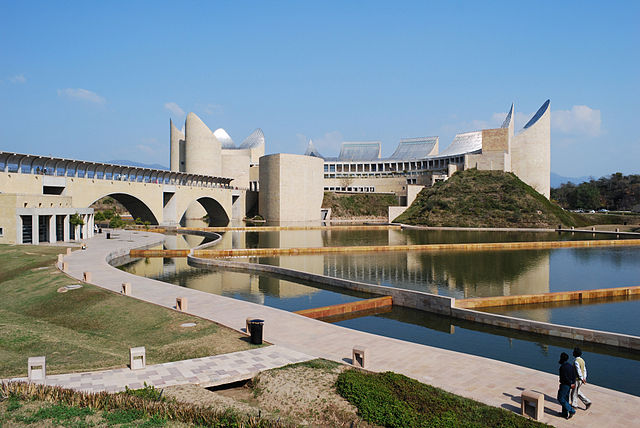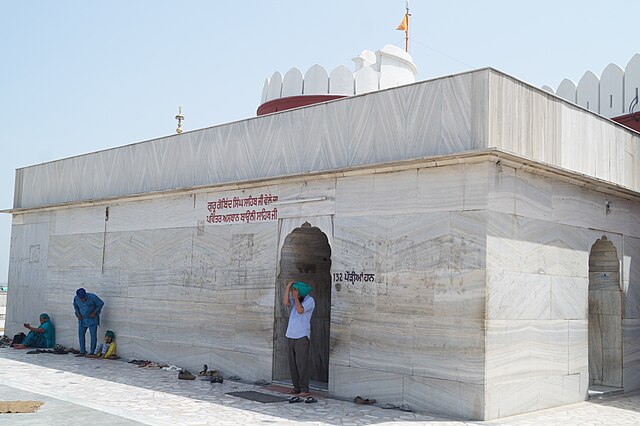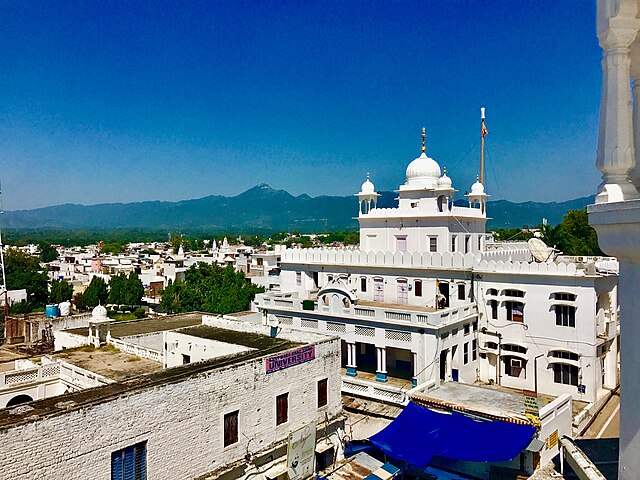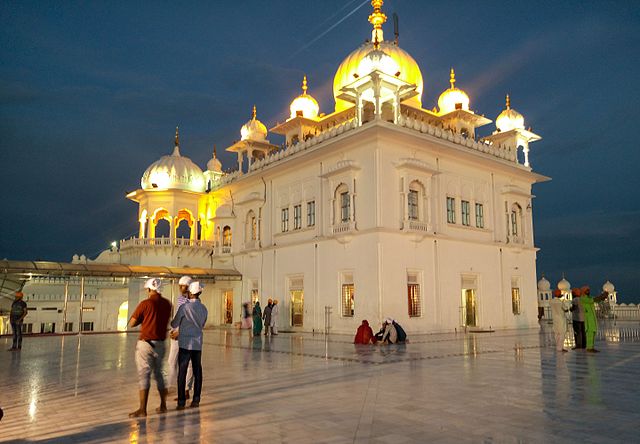Have you ever wondered what it feels like to walk through a city where every stone tells a story of courage, faith, and sacrifice? Welcome to Anandpur Sahib, literally meaning “City of Bliss,” a place that stands as one of the most revered destinations in Sikhism and a testament to India’s rich spiritual heritage.
Nestled in the Rupnagar district of Punjab, this sacred city isn’t just another pilgrimage site – it’s the birthplace of the Khalsa, the beating heart of Sikh identity, and a living museum of faith that has withstood the test of time. Whether you’re a spiritual seeker, history enthusiast, or curious traveler, Anandpur Sahib offers an experience that transcends ordinary tourism.
What Makes Anandpur Sahib Special?
Historical Significance
Think of Anandpur Sahib as the Jerusalem of Sikhism. This isn’t just hyperbole – it’s where some of the most pivotal moments in Sikh history unfolded. The city witnessed the transformation of a spiritual movement into a warrior community, marking a turning point that would shape not just Sikhism but the entire Indian subcontinent’s history.
The very soil here seems to echo with the footsteps of the Sikh Gurus, particularly Guru Tegh Bahadur and Guru Gobind Singh, who made this place their home and headquarters. It’s where strategies were planned, battles were fought, and most importantly, where the spiritual foundation of the Khalsa was laid in 1699.
Religious Importance
For Sikhs worldwide, Anandpur Sahib holds the same reverence as Mecca does for Muslims or Vatican City for Catholics. It’s one of the five Takhts (seats of temporal authority) in Sikhism, specifically known as Takht Sri Keshgarh Sahib. This designation alone places it among the most sacred sites in the Sikh faith.
But here’s what makes it truly special – it’s not just about historical importance. The city continues to be a living, breathing center of Sikh culture and spirituality, where millions of devotees gather annually to reconnect with their roots and strengthen their faith.
The Rich History of Anandpur Sahib

Foundation by Guru Tegh Bahadur
Picture this: it’s 1665, and Guru Tegh Bahadur, the ninth Sikh Guru, is looking for a place where his followers can live freely and practice their faith without persecution. He finds a piece of land in the Shivalik Hills, purchases it from the local rulers, and establishes what would initially be called Chakk Nanaki, named after his mother.
This wasn’t just a random choice of location. The strategic position in the hills provided natural defense, while the fertile land promised sustenance for the growing community. It was here that Guru Tegh Bahadur spent his final years before his martyrdom in Delhi, setting the stage for his son’s remarkable legacy.
Guru Gobind Singh’s Era
When Guru Gobind Singh became the tenth Guru at the tender age of nine, Anandpur Sahib became the center of a transformation that would echo through centuries. Under his leadership, this peaceful town evolved into a fortress of faith and resistance.
Birth of the Khalsa
April 13, 1699 – mark this date in golden letters in the annals of Sikh history. It was on this day, during the Baisakhi festival, that Guru Gobind Singh performed one of the most dramatic and significant acts in religious history. Standing before thousands of followers, he called for someone willing to sacrifice their life for their faith.
The creation of the Khalsa wasn’t just a religious ceremony; it was a revolutionary act that transformed the very DNA of Sikhism. The five beloved ones (Panj Pyare) who stepped forward that day became the foundation of a new order – one that emphasized equality, courage, and unwavering devotion to justice.
Military Fortifications
Guru Gobind Singh wasn’t just a spiritual leader; he was a brilliant military strategist. Understanding the turbulent times and the constant threat from Mughal forces, he transformed Anandpur Sahib into a fortified city. The construction of forts like Holgarh, Fatehgarh, and others turned this spiritual center into an impregnable stronghold.
These weren’t just military installations – they were symbols of resistance against oppression and beacons of hope for those who believed in religious freedom and social justice.
Sacred Gurdwaras in Anandpur Sahib
Takht Sri Keshgarh Sahib
If Anandpur Sahib is the heart of Sikhism, then Takht Sri Keshgarh Sahib is its soul. This magnificent gurdwara stands at the exact spot where the Khalsa was born, making it one of the most sacred sites in the Sikh world.
The architecture itself tells a story – the gleaming white marble, the golden domes catching the sunlight, and the imposing structure that seems to reach toward the heavens. But it’s not just about the physical beauty; it’s about what this place represents. Every brick, every tile carries the weight of history and the hopes of millions.
The daily ceremonies here are nothing short of mesmerizing. The morning prayers, the continuous reading of the Guru Granth Sahib, and the evening aarti create an atmosphere that’s both peaceful and electrifying. You don’t have to be religious to feel the power of this place.
Gurdwara Sis Ganj Sahib
This gurdwara holds particular significance as it’s built at the site where Guru Tegh Bahadur’s head was cremated after his martyrdom in Delhi. The very name “Sis Ganj” refers to the head (sis) of the Guru, making this a place of profound reverence and sorrow.
The story behind this gurdwara is one that epitomizes the Sikh commitment to religious freedom and human rights. Guru Tegh Bahadur’s sacrifice wasn’t just for Sikhs – he gave his life defending the religious freedom of Kashmiri Pandits, showing the universal nature of Sikh values.
Gurdwara Manji Sahib
Named after the sacred platform (manji) where Guru Gobind Singh used to sit and hold court, this gurdwara represents the administrative and judicial aspects of the Guru’s leadership. It’s where important decisions were made, disputes were resolved, and the governance of the growing Sikh community was managed.
Other Notable Gurdwaras
The city is dotted with numerous other gurdwaras, each with its own story and significance. Gurdwara Guru Ka Lahore, Gurdwara Damdama Sahib, and Gurdwara Bhora Sahib are just a few examples of the spiritual wealth that Anandpur Sahib offers to its visitors.
Hola Mohalla: The Spectacular Festival

Origins and Significance
If you think you’ve seen grand festivals before, wait until you witness Hola Mohalla in Anandpur Sahib. Started by Guru Gobind Singh in 1701, this three-day festival was designed as a Sikh alternative to the Hindu festival of Holi, but with a distinctly martial flavor.
The Guru’s vision was brilliant – instead of just celebrating with colors and sweets, why not use the occasion to display skills, strengthen community bonds, and prepare for the challenges ahead? Hola Mohalla became a perfect blend of spirituality, culture, and military preparedness.
Celebrations and Activities
Picture this: hundreds of thousands of people converging on this small town, the air filled with the sound of drums, the clash of swords, and the thundering of horses’ hooves. This isn’t just a festival; it’s a living, breathing display of Sikh culture and values.
Martial Arts Displays
The highlight of Hola Mohalla is undoubtedly the spectacular display of martial arts. Nihang Sikhs, the traditional warrior-saints of Sikhism, demonstrate their skills with swords, spears, and other traditional weapons. These aren’t choreographed performances for tourists – they’re genuine displays of skills passed down through generations.
Watching a Nihang warrior perform gatka (traditional Sikh martial art) is like witnessing poetry in motion. The precision, the grace, the deadly beauty of the movements – it’s hypnotic and awe-inspiring at the same time.
Cultural Programs
But Hola Mohalla isn’t all about martial displays. The festival features an incredible array of cultural programs – kirtan (devotional singing), poetry recitations, and traditional dances that showcase the rich cultural heritage of Punjab and Sikhism.
The community kitchen (langar) during Hola Mohalla is a sight to behold. Thousands of volunteers work round the clock to feed hundreds of thousands of visitors, embodying the Sikh principle of seva (selfless service) on a massive scale.
Architecture and Design Elements
Sikh Architectural Style
The architecture of Anandpur Sahib’s gurdwaras represents a unique blend of Mughal, Rajput, and traditional Punjabi styles, creating what we now recognize as classic Sikh architecture. The prominent features include onion-shaped domes, ornate frescoes, intricate marble work, and the distinctive use of white marble and gold.
What’s fascinating is how these buildings manage to be both imposing and welcoming at the same time. The large courtyards, wide entrance gates, and open spaces reflect the Sikh principles of equality and openness – everyone is welcome, regardless of their background or beliefs.
Modern Developments
Recent years have seen significant development in the infrastructure around these historic sites. The Punjab government and various Sikh organizations have invested heavily in improving facilities for the millions of visitors who come here annually.
The new museum complex, improved parking facilities, and better accommodation options have made Anandpur Sahib more accessible without compromising its spiritual essence. It’s a delicate balance between preservation and progress, and so far, it seems to be working well.
Planning Your Visit to Anandpur Sahib
Best Time to Visit
Timing your visit to Anandpur Sahib can make all the difference in your experience. While the city welcomes pilgrims and tourists year-round, certain times offer unique advantages.
The cooler months from October to March provide the most comfortable weather for exploring the various gurdwaras and historical sites. The temperatures are pleasant, and you can spend hours walking around without the exhausting heat of Punjab’s summers.
However, if you want to experience the city at its most vibrant, plan your visit during Hola Mohalla (usually in March) or during other significant Sikh festivals. Yes, it will be crowded, but the energy and atmosphere during these times are absolutely electric.
How to Reach
By Road
Anandpur Sahib enjoys excellent road connectivity, making it easily accessible from major cities in Punjab and neighboring states. The town is well-connected by national and state highways, with regular bus services from cities like Chandigarh (about 31 km), Ludhiana, and Delhi.
If you’re driving, the journey itself is quite scenic, especially as you approach the town through the rolling hills of the Shivalik range. The roads are generally in good condition, though they can get congested during festival times.
By Rail
The nearest major railway station is Anandpur Sahib Railway Station, which is well-connected to major cities across India. However, for more frequent train services, you might consider arriving at Chandigarh Railway Station and then taking a bus or taxi for the remaining 31-kilometer journey.
By Air
The closest airport is Chandigarh Airport, approximately 67 kilometers away. From there, you can hire a taxi or take a bus to reach Anandpur Sahib. While this might seem like a longer route, it’s often the fastest option for visitors coming from distant cities.
Accommodation and Local Facilities
Where to Stay
Anandpur Sahib offers a range of accommodation options to suit different budgets and preferences. The most popular choice among pilgrims is staying in the gurdwara guest houses, which offer clean, simple accommodation at very reasonable rates or sometimes free of charge.
For those seeking more comfort, there are several hotels and guest houses in and around the town. The Keshgarh Sahib complex itself has excellent accommodation facilities, and staying there puts you right in the heart of the spiritual action.
Don’t expect luxury resorts here – Anandpur Sahib is about spiritual richness rather than material luxury. But what you’ll find is warm hospitality, clean facilities, and an atmosphere of peace and devotion that money can’t buy.
Dining Options
The langar (community kitchen) at the major gurdwaras is not just a dining option – it’s an experience in itself. The simple yet delicious food, served with love and devotion, embodies the Sikh principles of equality and service. Dal, roti, sabzi, and kheer might sound simple, but when prepared and served with such devotion, it becomes a feast for the soul.
For those who want to explore local Punjabi cuisine, there are several restaurants and dhabas in the town serving traditional dishes. Don’t miss trying the local specialties like makki di roti with sarson da saag, or the famous Punjabi lassi.
Nearby Attractions and Day Trips

Nangal Dam
Just about 20 kilometers from Anandpur Sahib, the Nangal Dam offers a perfect contrast to the spiritual intensity of the holy city. Built on the Sutlej River, this dam creates a beautiful reservoir surrounded by hills, making it an ideal spot for a peaceful evening or a family picnic.
The drive to Nangal Dam is scenic, and the reservoir area has been developed into a nice recreational spot with boating facilities and gardens. It’s a great place to unwind after a day of spiritual exploration.
Bhakra Dam
One of India’s largest dams, Bhakra Dam is about 45 kilometers from Anandpur Sahib and makes for an excellent day trip. This engineering marvel, often called the “Temple of Resurgent India” by Jawaharlal Nehru, showcases India’s progress in the field of engineering and water management.
The sheer scale of the dam is impressive, and the surrounding area offers beautiful views of the reservoir and the Shivalik Hills. There’s also a small museum that explains the construction and significance of this massive project.
Ropar
The historic town of Ropar (Rupnagar), about 42 kilometers away, is one of the oldest cities in Punjab with a history dating back to the Harappan civilization. The archaeological museum here houses artifacts from the Indus Valley Civilization, making it a fascinating destination for history buffs.
The town also has several gurdwaras and the beautiful Sutlej River flowing through it, adding to its charm and significance.
Cultural Impact and Modern Relevance
Educational Institutions
Anandpur Sahib has evolved beyond just being a pilgrimage center. The establishment of various educational institutions has made it a center of learning as well. The Khalsa College and other institutions here are carrying forward the Sikh tradition of education and knowledge sharing.
These institutions don’t just focus on religious education – they offer courses in various fields, reflecting the Sikh belief in the importance of both spiritual and worldly knowledge.
Community Development
The continuous flow of pilgrims and the attention from various Sikh organizations worldwide has led to significant development in the area. Infrastructure improvements, healthcare facilities, and economic opportunities have transformed the lives of local residents.
The city serves as an excellent example of how religious tourism, when managed properly, can contribute to community development and economic growth while preserving cultural and spiritual values.
Conclusion
Anandpur Sahib isn’t just a destination; it’s a journey through time, faith, and human resilience. This sacred city offers something unique to every visitor – spiritual solace for the devout, historical insights for the curious, cultural richness for the explorer, and a profound sense of peace for the weary soul.
Whether you come here seeking answers to life’s big questions, wanting to understand Sikh history and culture, or simply looking for a break from the chaos of modern life, Anandpur Sahib welcomes you with open arms. The city that gave birth to the Khalsa continues to inspire people from all walks of life with its message of courage, equality, and service to humanity.
As you walk through its sacred halls, participate in the community kitchen, or simply sit in quiet contemplation in one of its many gurdwaras, you’ll understand why millions of people consider this place sacred. In a world often divided by differences, Anandpur Sahib stands as a beacon of unity, reminding us of our shared humanity and the power of faith to transform lives.
Plan your visit, but more importantly, prepare your heart and mind for an experience that will stay with you long after you’ve returned home. After all, Anandpur Sahib isn’t just a place you visit – it’s a place that visits your soul.
Frequently Asked Questions
1. What is the best time of year to visit Anandpur Sahib?
The best time to visit Anandpur Sahib is from October to March when the weather is pleasant and comfortable for sightseeing. However, if you want to experience the vibrant Hola Mohalla festival, plan your visit in March. Avoid the summer months (April to June) as temperatures can soar above 40°C, making outdoor exploration challenging.
2. How many days should I spend in Anandpur Sahib?
A typical visit to Anandpur Sahib can be completed in 1-2 days if you’re focusing on the main gurdwaras and historical sites. However, if you want to explore nearby attractions like Bhakra Dam and Nangal Dam, or if you’re visiting during a festival, consider spending 3-4 days to fully appreciate the spiritual and cultural richness of the area.
3. Is accommodation available at the gurdwaras, and what are the rules?
Yes, most major gurdwaras in Anandpur Sahib offer free or very affordable accommodation to pilgrims. However, these facilities operate on basic principles – guests are expected to follow gurdwara protocols, participate in community service (seva), maintain cleanliness, and respect the spiritual environment. It’s advisable to book in advance during festival seasons.
4. What should I know about langar (community kitchen) etiquette?
Langar is free for everyone regardless of religion, caste, or social status. When participating, sit on the floor in rows, wait for everyone to be served before starting, eat only what you can finish to avoid waste, and offer to help with cleaning or serving if possible. Remove shoes before entering the dining area and cover your head as a sign of respect.
5. Are there any restrictions or dress codes for visiting the gurdwaras?
Yes, there are simple dress codes to follow: cover your head with a scarf or turban (often provided at the entrance), remove shoes before entering the prayer halls, dress modestly covering arms and legs, avoid leather items inside the gurdwara premises, and maintain a respectful demeanor. Photography may be restricted in certain areas, so always ask permission before taking pictures.

